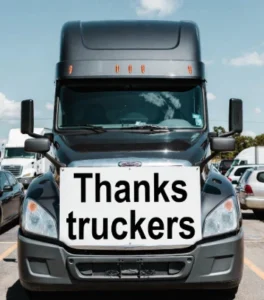During the first half of October five transportation-related companies filed for bankruptcy under Chapter 11.
The transportation industry has gone through difficult months, but October appears to have exceeded expectations in just two weeks, thanks to a surge in filings from companies seeking protection under Chapter 11. According to a recent report from FreightWaves, the digital platform found that in the first half of October, five transportation-related companies filed for bankruptcy under Chapter 11, an unusually high rate compared to recent times.
Chapter 11 is a type of bankruptcy that allows companies to restructure their debts, enabling them to continue operations while working to restore solvency. As part of the process, a court appoints a trustee to oversee the reorganization. While there are other legal alternatives, Chapter 11 is a common option for businesses facing financial distress.
This type of bankruptcy offers companies a chance to recover, allowing them to obtain a “fresh start” by restructuring rather than eliminating their debts, a process known as reorganization bankruptcy. However, in some cases, not even this relief is enough to prevent total collapse.
5 transportation companies file for Chapter 11
FreightWaves conducted its research using the Public Access to Court Electronic Records (PACER) database, where it found that five transportation companies—ranging from small to large—had filed for Chapter 11 in the first two weeks of October. While there is no definitive data confirming whether this is the highest number so far this year, an average of 2.5 filings per week points to a concerning trend.
These are the companies that filed for Chapter 11 in the first half of October, according to data shared by FreightWaves:
1. GEC Transport Solutions
Based in Pharr, Texas, the company operates 70 power units and has been serving the area near the Mexican border since 2015. GEC Transport Solutions filed for Chapter 11 in the Southern District of Texas, stating that there will be no funds available for unsecured creditors after administrative expenses are paid.
The company reported assets and liabilities between $1 million and $10 million. Its largest unsecured debts are loans from Alan McDaniel, totaling approximately $1.05 million. It also reported an out-of-service (OOS) rate below the national average: 13% for vehicles and 3.3% for drivers, compared to national averages of 22.26% and 6.67%, respectively.
2. Propel Trucking
Propel Trucking, based in Russellville, Arkansas, filed for bankruptcy in the Eastern District of Arkansas under the name Propel Trucking, also operating as Propel Logistics and Propel Xpress.
- The company reports between 1 and 49 creditors.
- Estimated assets are between $0 and $50,000, while liabilities range from $1,000,001 to $10 million.
- The largest unsecured creditor is BMO Bank NA, owed $693,928.46.
- Other significant debts include Wells Fargo Equipment Finance ($231,000) and Wintrust Specialty Finance ($276,300).
3. R&R Transport & Logistics
Headquartered in Houston, R&R Transport & Logistics presents itself as both a carrier and a broker. It should not be confused with a larger company of the same name based in Pittsburgh. According to FMCSA, it operates 20 power units and had an OOS rate of 18.2% over the past two years.
Financial details include:
- $35,000 in available cash
- $266,000 in accounts receivable
- Total assets (including equipment): approximately $1.12 million
- Total liabilities: approximately $1.49 million
4. G1 Transport
G1 Transport, a small Georgia-based carrier with only five power units according to FMCSA, filed for Chapter 11 in the Northern District of Georgia. The filing includes seven hand-listed creditors with no legal representation indicated, with estimated assets from $50,001 to $100,000, and estimated liabilities from $500,001 to $1 million
5. Styx Logistics
Styx Logistics, based in Reno, Nevada, is an Amazon Delivery Service Partner (DSP). According to FMCSA, it operates 30 power units, likely delivery vans rather than heavy-duty trucks. It reports fewer than 50 creditors, with estimated assets between $50,000 and $100,000, and liabilities ranging from $1,000,001 to $10 million.
What’s happening in the transportation industry?
The year 2025 has been particularly challenging for the transportation industry. From the imposition of tariffs to high driver turnover rates, companies in the sector have faced a series of obstacles that, so far, seem to lack clear solutions. While there is no conclusive research linking the spike seen in October to the broader challenges in the transportation sector, it is reasonable to speculate that there may be a connection between the two.

The strangest Black Friday purchases: from funny to nothing
Fueled by the adrenaline of the moment and the excitement of scoring big discounts, many shoppers have ended up buying unusual items during Black Friday.

Young drivers wanted, older drivers needed: the industry’s biggest dilemma
The road transportation industry remains at a crossroads in its efforts to recruit young drivers, but the workforce keeps aging and seeking retirement. The road

Thanksgiving, Black Friday and the Long Weekend: America Moves Because Trucks Never Stop
Thanksgiving, Black Friday and the Long Weekend: America Moves Because Trucks Never Stop

Thankful for the Drivers Who Keep America Moving This Thanksgiving
Thankful for the Drivers Who Keep America Moving: The Invisible Work Behind One of the Busiest Thanksgiving Seasons

Preparing for Thanksgiving travel: best and worst times to travel
Whether you are a truck driver, a traveler, or simply someone who needs to move around during these days, we share essential information to help

Cargo theft spikes during Thanksgiving: how to stay safe
Every year during Thanksgiving, cargo theft poses a serious threat to the trucking industry, and this year will be no exception. Every year during Thanksgiving,
All content and original artwork, unless otherwise noted, is protected by copyright. Saint George uses certain images under license from various licensing vendors for this purpose. Any unauthorized commercial reproduction or distribution of copyrighted materials is prohibited.


